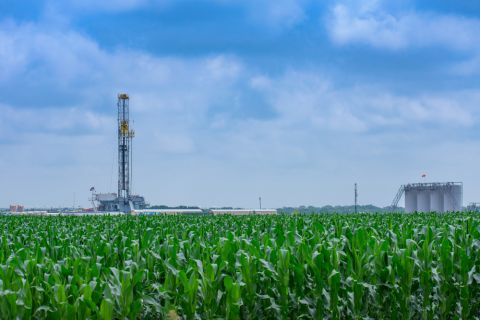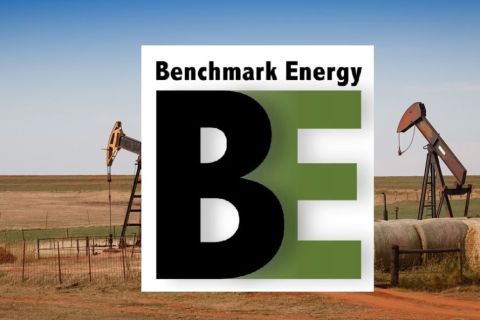The Gulf of Mexico shelf has been pronounced dead before, but then along came the application of 3-D seismic, combined with the majors letting go of assets that still had great potential for lower-cost operators to exploit. Is it nearly dead now? Gas reserves in the deep Gulf shelf, along with sustained high gas prices to fund drilling, are piquing an increasing number of explorationists' interests. But the promise of numerous and prolific new wells in the shallow Gulf shelf may be history, according to some in the industry. But don't sell your stock in shallow Gulf operators just yet. Rapid consolidation in the region may soon be sparked, especially among operators wanting to package platforms and leases while entertaining ideas of deep-shelf plays. Will yet another Outer Continental Shelf life be born? Today, the outlook is far from the heady days of the early offshore industry, and from recent history when companies like Ocean Energy were founded upon 3-D seismic applied to the shallow Gulf. At a recent Society of Petroleum Engineers-Gulf Coast Section business-development program in Houston, four firms that are making a living from the Shelf told their stories of profit potential. One is in the plug-and-abandon business! Rightly or in jest, another panelist, Mike Minarovic, a managing partner with privately held Arena Resources, said his company is just a small step up the food chain from the P&A firm, Maritech Resources, which is a business unit of service company Tetra Technologies Inc. Another speaker, Keith Meyer, is president of Cheniere LNG, a former shallow Gulf producer that now aims to be in the Gulf Coast liquefied natural gas (LNG) terminal business. Cheniere turned its cash from Gulf oil and gas flows toward LNG in the late-1990s when it saw finding and development (F&D) costs in the region rising to a minimum $3.50 per thousand cubic feet equivalent (Mcfe). Cheniere decided the costs and risks were too high to be confident of future profits. So, it's out of the Gulf production business. A fourth speaker, Bruce Sidner, is vice president of exploration for Energy Partners Ltd., the New Orleans-based independent that was formed in the late-1990s by ex-Louisiana Land & Exploration executives. EPL's whole focus is the Gulf, and it has been eking out some growth for itself close to home. Arena Resources was founded at about the same time as EPL, and gas prices have worked out well for both firms. In 1999, Arena's business plan was based on a 12-month strip of $2.21 per million Btu. The plan works twice as well at today's $4.35 per million and higher. "Our long-term plan is to stay in this niche," Minarovic says. It isn't seeing much new competition in its neighborhood. He pointed to a chart he developed from the Nymex gas strip of the past several years and concurrent Gulf jackup-rig counts. At one time, the two tracked each other to peak at 140 jackups at work three years ago. Since then, there has been an uncoupling-higher gas prices just don't result in more jackups at work-and that's because of fewer quality prospects to drill, he says. "The 3-D boom is now way beyond its peak." He doubts there will ever be 140 jackups at work in the shallow Gulf again. As for the deep shelf, Minarovic is watching other operators' results. "I think seismic is challenged at those depths," he says, and he isn't very optimistic about how often the risks will net sufficient rewards. (For details on one deep-shelf play, the JB Mountain, see "Momentum" in this issue.) Before the Gulf of Mexico shallow shelf is all but plugged and abandoned, where will its current producers go to grow-and as successfully? Increasingly, Gulf-shelf-centric operators will be asked to answer, "Is there life after the shallow Gulf?" -Nissa Darbonne Managing Editor
Recommended Reading
Enverus: 1Q Upstream Deals Hit $51B, but Consolidation is Slowing
2024-04-23 - Oil and gas dealmaking continued at a high clip in the first quarter, especially in the Permian Basin. But a thinning list of potential takeout targets, and an invigorated Federal Trade Commission, are chilling the red-hot M&A market.
EIA: Permian, Bakken Associated Gas Growth Pressures NatGas Producers
2024-04-18 - Near-record associated gas volumes from U.S. oil basins continue to put pressure on dry gas producers, which are curtailing output and cutting rigs.
Benchmark Closes Anadarko Deal, Hunts for More M&A
2024-04-17 - Benchmark Energy II closed a $145 million acquisition of western Anadarko Basin assets—and the company is hunting for more low-decline, mature assets to acquire.
‘Monster’ Gas: Aethon’s 16,000-foot Dive in Haynesville West
2024-04-09 - Aethon Energy’s COO described challenges in the far western Haynesville stepout, while other operators opened their books on the latest in the legacy Haynesville at Hart Energy’s DUG GAS+ Conference and Expo in Shreveport, Louisiana.




